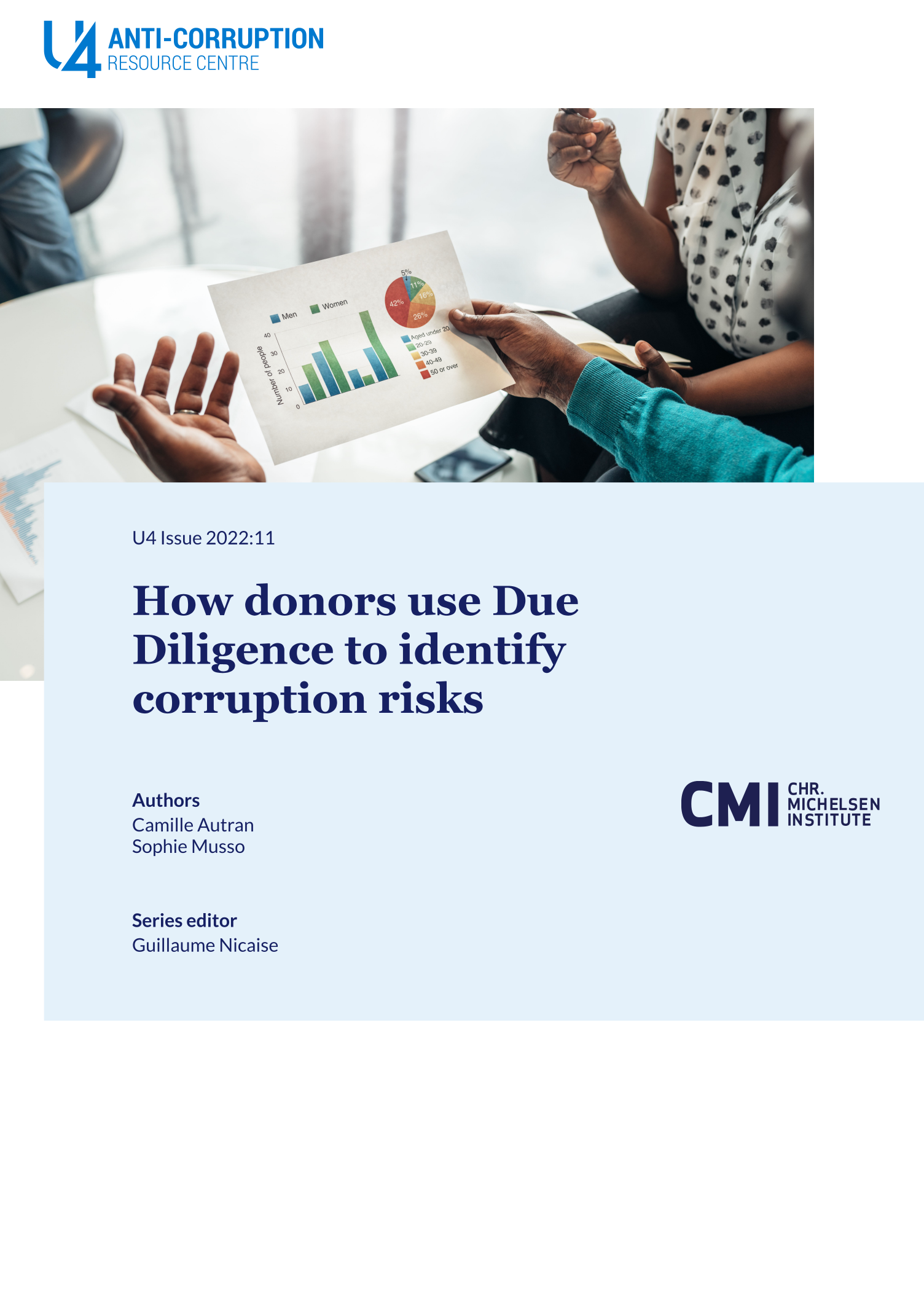Main points
- Reliable partners are essential to ensure that donor-supported projects are delivered in line with contractual commitments.
- Due Diligence is a critical tool in any effort to combat corruption, as it allows donors to spot corruption risks involving a potential partner at the earliest possible stage.
- Donors are bound by a best-efforts obligation and must therefore prove that they made every effort to obtain information about a potential partner in connection with a project. The availability of such information often depends on the knowledge of field staff and research conducted on the web or using dedicated systems.
- The information collection stage may reveal red flags, which must be investigated and mitigated where necessary, eg more stringent anti-corruption clauses and audits during project delivery.
- Due Diligence is particularly well-suited to partners with well-developed internal structures for sharing necessary information, but its reporting requirements can prove burdensome for local NGOs unaccustomed to such formalities. Donors may also be called on to inform and educate partners who see Due Diligence as an ‘abuse’ of transparency.
- Due Diligence alone is not enough to prevent all corruption risks and must be incorporated into a broader framework.



